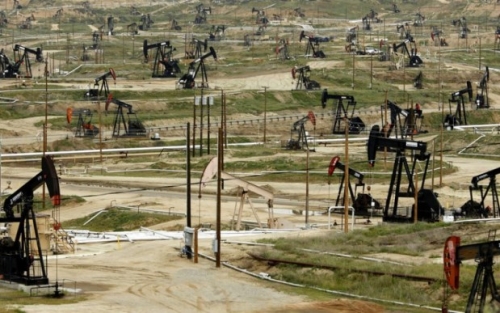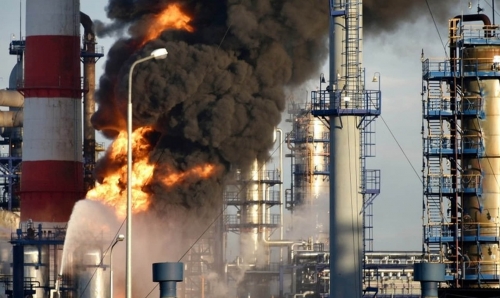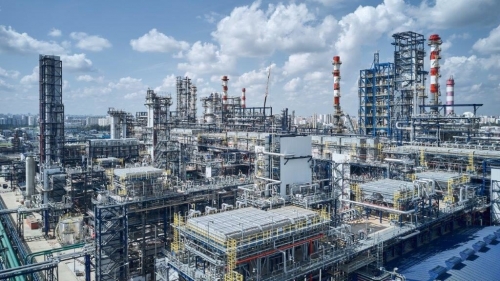Minor moves in oil prices this week, though sentiment remains bearish after a decision by OPEC+ to further roll back production cuts and the latest series of tariff threats by US President Trump. Potential U.S sanctions on Russia that may limit oil supply provided support to oil prices on Friday.
BKR Rig Count | The total active drilling rigs in the United States decreased by 2 last week, to 537. Oil rigs dropped by 1 to 424, and gas rigs remained flat at 108. Rig count in the Permian Basin remained flat at 265 | Jul 11 | BKR NAM Rig Count
US Crude Inventories, excluding those in the Strategic Petroleum Reserve (SPR), increased by 7.1 MMbbl to 426 MMbbl (about 8% below the 5y average for this time of year). On the products side, gasoline decreased by 2.7 MMbbl (1% below the 5y average). Distillate fuels decreased by 0.8 MMbbl (23% below the 5y average). Total commercial petroleum inventories increased by 6.4 MMbbl | Jul 4 | EIA Weekly Report
OPEC+ is discussing a pause in further production increases from October after its next monthly hike, according to delegates familiar with the matter. Delegates say that key OPEC+ nations are concerned that prices will sink further if they continue to bolster production after September. JPMorgan Chase and Citigroup have forecast that prices will continue to slide towards $60 a barrel later this year as excess supplies pile up | Jul 10 | Bloomberg
OPEC reinforced its view — an outlier even within the petroleum industry — that global oil consumption will keep increasing to the middle of the century. Demand will grow by roughly 19% to reach almost 123 million barrels a day by 2050, the Organization of the Petroleum Exporting Countries said in a report Thursday. That’s about 3 million a day more than it predicted in September. India will lead the expansion, and US President Donald Trump’s decision to exit the Paris climate accord is supporting the outlook, it said | Jul 10 | Bloomberg
Senior officials from three of OPEC’s core producer nations — KSA, UAE, and Kuwait — lined up to say that the super-sized addition of supply at the weekend was needed by the global market. “You can see that even with the increase in several months, we haven’t seen a major buildup in the inventories, which means the market needed those barrels,” said Suhail Al Mazrouei, the United Arab Emirates energy minister. His comments were echoed by officials at the state oil companies of Saudi Arabia and Kuwait | Jul 10 | Bloomberg
Saudi Arabia raised crude output far above its OPEC+ quota last month, joining other producers in a rush to export oil out of the Persian Gulf as Israel went to war with Iran, according to the International Energy Agency. The kingdom raised crude production by roughly 700,000 barrels a day to 9.8 million barrels a day, with about 70% of the additional supply exported, the IEA said in its monthly report. It was a rare breach of agreed OPEC+ limits by Riyadh, which has repeatedly scolded other members for over-production | Jul 11 | Bloomberg
Global oil supply will expand almost four times faster than demand this half, pressuring prices as stockpiles build, according to RBC Capital Markets LLC, which sees Brent falling to the mid-$50s a barrel. While some parts of the physical market are tight at present, that support may fade as worldwide crude output expands by 2.3 million barrels a day this half, dwarfing a projected rise in demand of 600,000 barrels, analysts including Brian Leisen said in a July 9 note | Jul 9 | Bloomberg
Russia’s deteriorating crude and oil product exports cast doubt on the nation’s ability to support its production capacity, the IEA said in its monthly report. “Volumes of both crude and products remained at exceptionally weak levels in June, at a five-year seasonal low,” adding that flows have been deteriorating throughout most of 2024 and 2025. It “raises questions about Russia’s ability to sustain its upstream production capacity” | Jul 11 | Bloomberg
Looking ahead
IEA Oil Market Report – July 2025 | World oil demand growth is forecast to increase by 700 kb/d in 2025, its lowest rate since 2009, with the exception of the 2020 Covid year. Annual growth eased from 1.1 mb/d in 1Q25 to just 550 kb/d in 2Q25, with emerging market consumption particularly lacklustre. Global oil demand is projected to expand by 720 kb/d to reach 104.4 mb/d in 2026. Global oil supply increased by a steep 950 kb/d m-o-m to 105.6 mb/d in June, led by Saudi Arabia. Output was up by 2.9 mb/d y-o-y, of which OPEC+ accounted for 1.9 mb/d. With higher OPEC+ targets for August, world oil supply is projected to rise by 2.1 mb/d to 105.1 mb/d this year and by an additional 1.3 mb/d in 2026, with non-OPEC+ adding 1.4 mb/d and 940 kb/d, respectively. Observed oil inventories surged by 73.9 mb to 7 818 mb in May, led by OECD commercial product inventories and crude in non-OECD countries. Crude, NGLs and feedstocks were up for the fourth month in a row, by 49.7 mb, in large part due to a sharp rise in China, while oil products increased for the first time this year, by 24.2 mb. Preliminary data for June showed global oil stocks rose further, mainly in oil on water and the non-OECD. North Sea Dated crude increased by $7/bbl m-o-m to an average $71.35/bbl in June after trading in a wide $65-$80/bbl range. Israel’s mid-month air strikes on Iranian military and nuclear targets sent prices soaring, with Dated briefly surpassing $80/bbl but easing after a ceasefire was agreed. The decision by OPEC+ to further accelerate the unwinding of production cuts failed to move markets in a meaningful way given tighter fundamentals | Jul 11 | IEA
EIA Short-Term Energy Outlook – July 2025 | Forecast global liquid fuels consumption increases by 0.8 million b/d in 2025 and 1.1 million b/d in 2026, driven almost entirely by demand from non-OECD countries. Total non-OECD oil consumption grows by 0.9 million b/d in 2025 and 1.0 million b/d in 2026, while OECD oil consumption falls by 0.1 million b/d in 2025 and is largely unchanged in 2026. Most non-OECD growth is concentrated in Asia. EIA forecasts liquid fuels consumption in India increases by 0.5 million b/d over the next two years and in China by 0.4 million b/d through 2026. The planned increases to OPEC+ production combined with strong supply growth outside of OPEC+ continue to drive strong growth in global liquid fuels production in EIA’s forecast. EIA now forecasts global liquids fuels production rises by 1.8 million b/d in 2025, before increasing by another 1.1 million b/d in 2026. EIA still expects total liquids production growth in our forecast will be led by countries outside of OPEC+. EIA expects the US, Brazil, Canada, and Guyana will drive production growth over the forecast period, with production from countries outside of OPEC+ increasing by 1.3 million b/d in 2025 and by 0.5 million b/d in 2026. Although the geopolitical risk premiums have risen, EIA still anticipates global oil inventories will grow significantly over the forecast period and put downward pressure on oil prices. Global oil inventories increased by an estimated 1.2 million barrels per day (b/d) in 1H25, and EIA expects they will increase by an average of 0.9 million b/d for the remainder of the year. EIA expects global oil inventory builds will average 1.1 million b/d in 2026. EIA expects Brent crude oil prices will average $69/b this year, $3/b higher than in last month’s STEO, largely driven by higher near-term prices due to the existing risk premium from the Israel-Iran conflict. Brent crude oil prices will average $58/b next year as significant increases in global oil inventories put consistent downward pressure on oil prices. | Jul 8 | EIA
OPEC World Oil Outlook 2025 | The 2025 OPEC World Oil Outlook (WOO) sees that the world will require more energy in the decades to come, with global energy demand set to be expand by 23% to 2050. Global oil demand is set for continued robust growth, reaching almost 123 mb/d by 2050. The analysis and key findings take on board recent energy and economic-related developments, particularly the substantial shifts in energy policy as decision-makers address the challenges of energy security, energy affordability and the need to reduce emissions. The publication also underlines the need for all energies to address future energy needs, the significance of ensuring that necessary investments are made, which is linked to providing the right enabling environment, and the importance of bringing modern energy services to billions that continue to go without. OPEC Secretary General, HE Haitham Al Ghais, said that the world requires more energy in the decades to come, and “for this to be available in a secure, stable and realistic manner that the world will continue to need all energies”. HE Al Ghais also highlighted that the world will continue to need all energies. “It is also a future in which we need to embrace all technologies, to drive innovation and efficiencies, and ensure that all peoples are taken into account, particularly given that it is the non-OECD developing world that will drive future energy growth” | Jul 11 | OPEC

%20(1).png)



